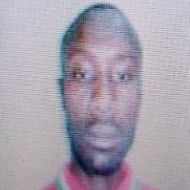
Muhammad Yusuf Muhammad
Work place: Department of Mathematics, Faculty of Computing and Mathematical Sciences, Aliko Dangote University of Science and Technology, Wudil Kano State Nıgerıa
E-mail: muhammadyusufmuhammed@kustwudil.edu.ng
Website: https://orcid.org//0000-0007-2586-5886
Research Interests:
Biography
Muhammad Yusuf Muhammad is a Lecturer at the Department of Mathematics, Aliko Dangote University of Science and Technology, Wudil Kano State Nigeria. He is a member of the Nigerian Mathematical Society (NMS), Mathematical Association of Nigeria (MAN) and Nigerian. He holds a M.Sc. in Applied Mathematics (fluid dynamics) from Aliko Dangote University of Science and Technology, Wudil, Kano State, Nigeria. He is currently a Ph.D. candidate in Fluid Dynamics at North West University, Kano, Nigeria. His research focuses on porous media and fluid flow in vertical concentric annuli, with applications in magnetohydrodynamics, heat, and mass transfer. Muhammad has published papers in the field and is passionate about advancing knowledge in mathematical modeling and fluid dynamics.
Author Articles
Derivation and Implementation of the Collocation Methods for Solving Single and Multi Time-Fractional Order Differential Equations
By Falade Kazeem Iyanda Muhammad Yusuf Muhammad Taiwo Omotayo Adebayo Adeyemo Kolawole Adefemi
DOI: https://doi.org/10.5815/ijmsc.2025.01.03, Pub. Date: 8 Apr. 2025
Standard collocation (SCM) and perturbed collocation (PCM) are utilized as effective numerical techniques for solving fractional-order differential equations (FODEs) which focus on constructing orthogonal polynomials to serve as basis functions for approximating the solutions to these equations. The approach began by assuming an approximate solution, expressed in the constructed orthogonal polynomials. These assumed solutions were then substituted into the original FODEs. Following this, the problem was converted into a system of algebraic linear equations by collocating the equations at evenly spaced interior points. Numerical examples and the results indicated that the SCM and PCM are easy, efficient, and in good agreement compared with some existing methods and the results presented in the tables and graphs unequivocally demonstrate the efficacy of the proposed methods in solving fractional-order differential equations, yielding solutions of remarkable accuracy. However, the SCM and PCM exhibit comparable accuracy, making it difficult to identify a single superior approach, we conclude that both the proposed methods are effective and viable options for solving fractional order differential equations.
[...] Read more.Other Articles
Subscribe to receive issue release notifications and newsletters from MECS Press journals